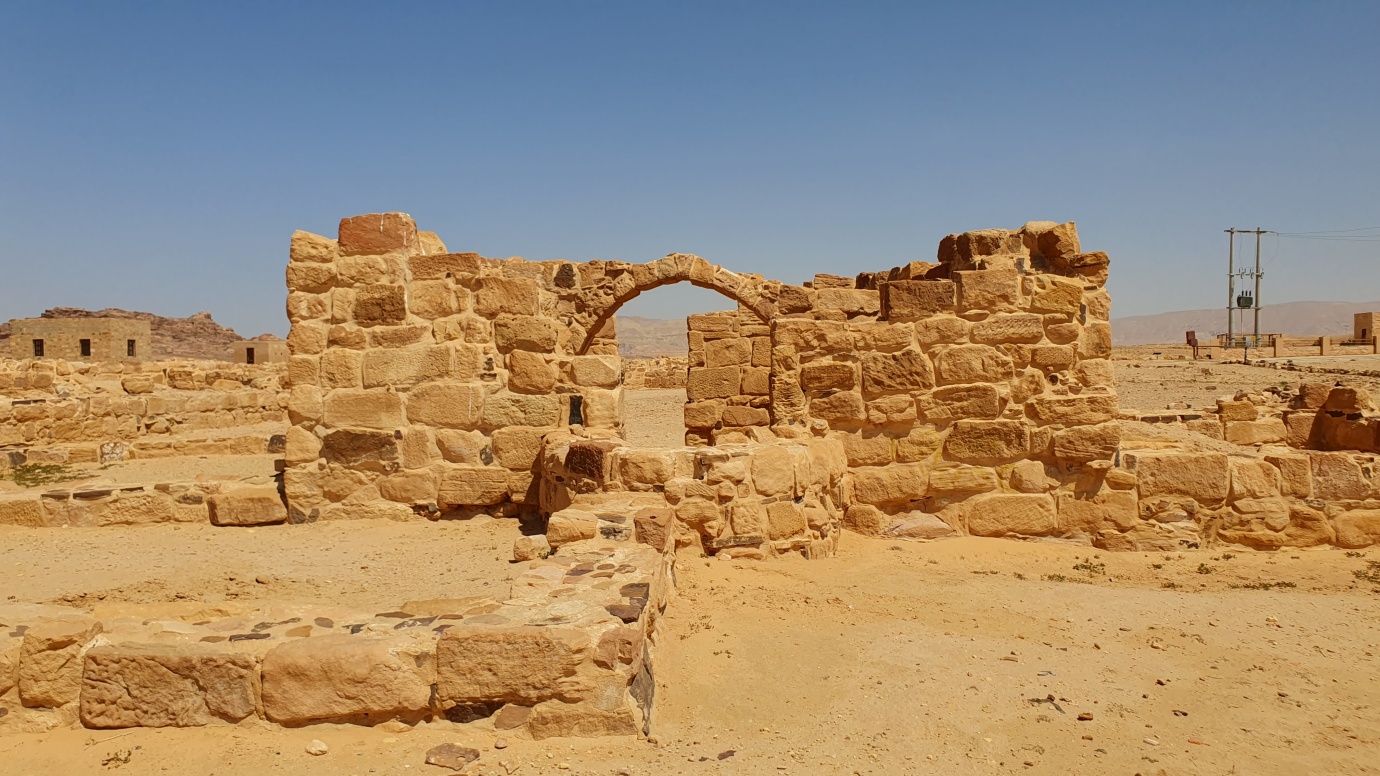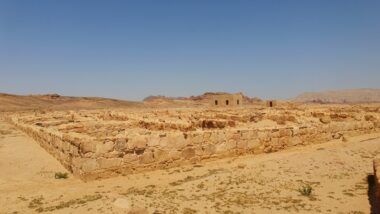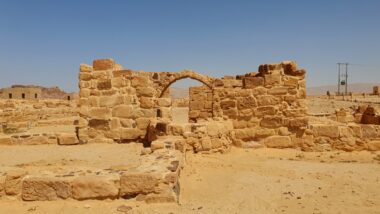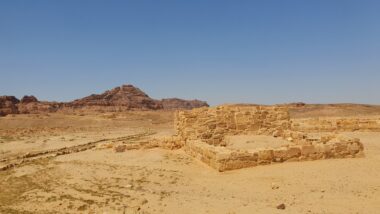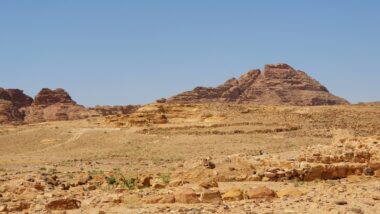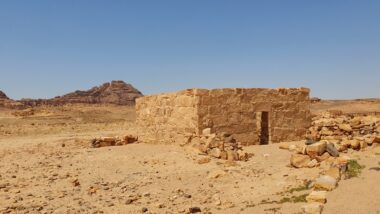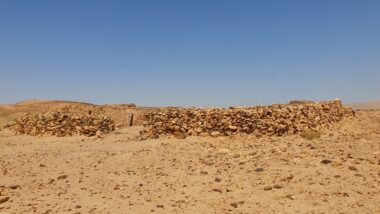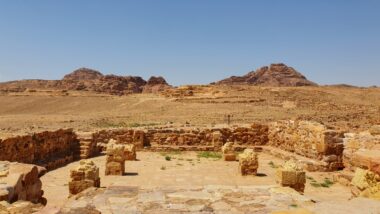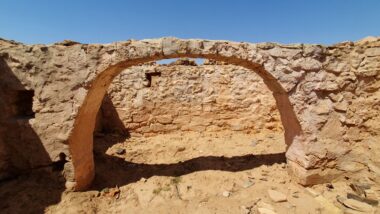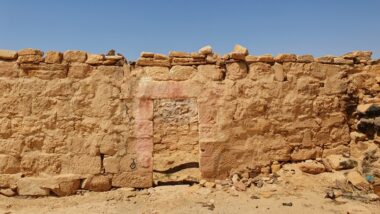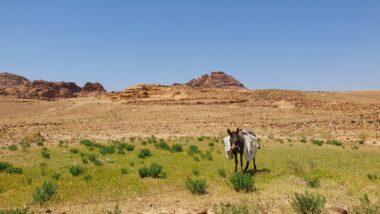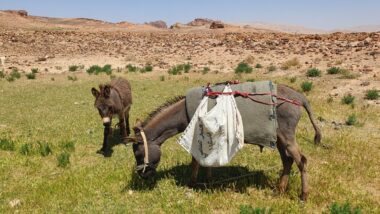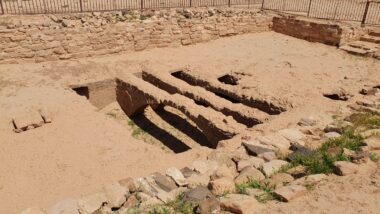We were curious, so we followed the brown sign off the main Aqaba Hwy and struggled along the narrow, potholed access road through the seldom-visited Bedouin district of Humayma to a surprisingly large archaeological site. The largely Nabataean site, pressed against the cliffs, includes 27 kilometers of covered aqueducts, some of which are visible today. They are evidence of the Nabataean attitude towards water, which could be brought in channels from the mountains or held in reservoirs on the plains. According to archaeologists, King Aretas III built Humaiyma around 80 BC as a trading post designed to help settle nomadic tribes. His efforts, judging by the nomads camping nearby some 2000 years later, were not wholly successful. Trajan’s army built a fort here in 106 AD, and settlement continued into the Byzantine and early Islamic periods. In 750 AD, the site was eventually abandoned. The visitor center was closed, and we were the only visitors if we did not count one dog and two donkeys.
Parking location – Dabet Hanut: 29.950147N 35.346818E


